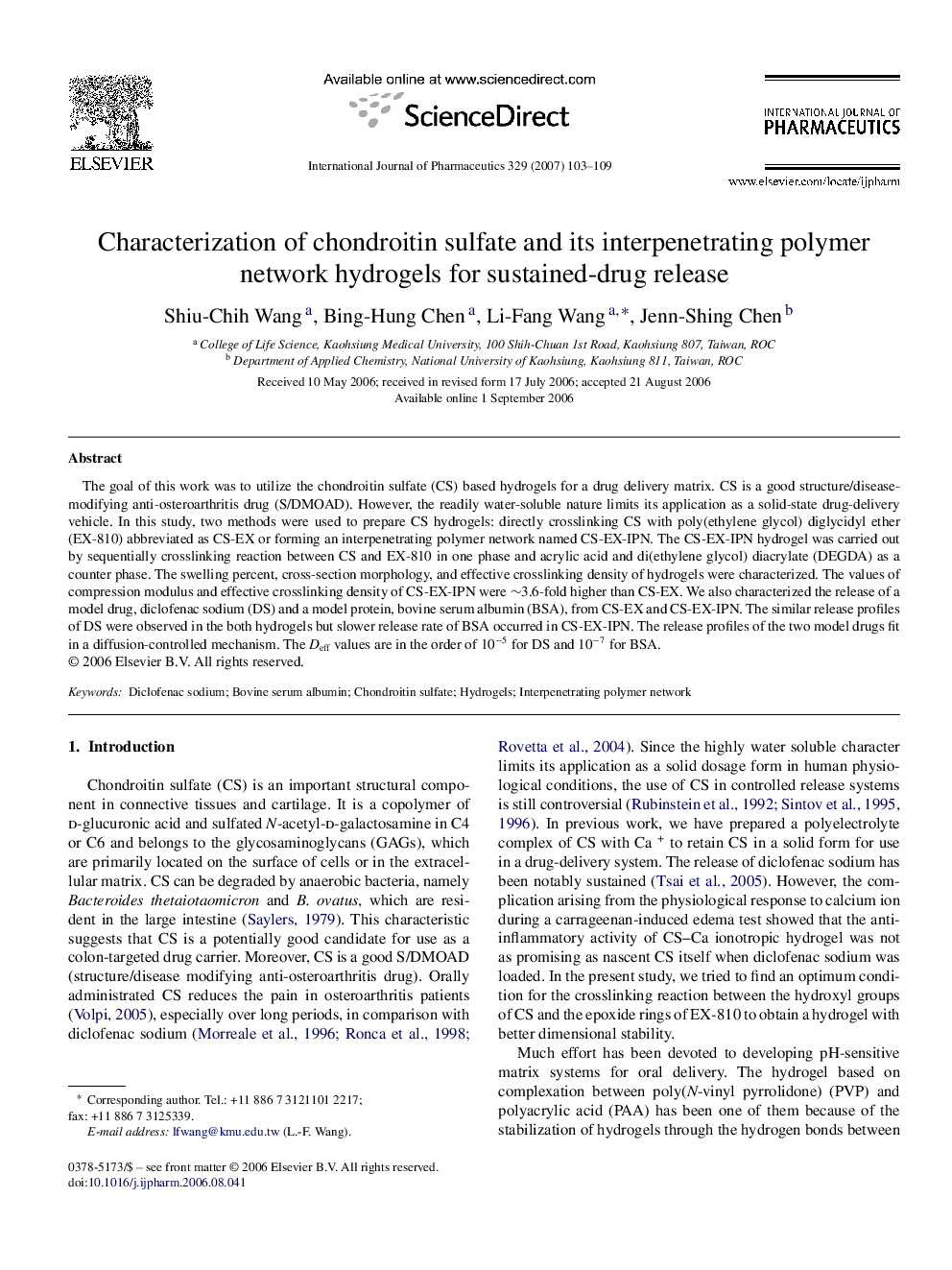| Article ID | Journal | Published Year | Pages | File Type |
|---|---|---|---|---|
| 2506526 | International Journal of Pharmaceutics | 2007 | 7 Pages |
The goal of this work was to utilize the chondroitin sulfate (CS) based hydrogels for a drug delivery matrix. CS is a good structure/disease-modifying anti-osteroarthritis drug (S/DMOAD). However, the readily water-soluble nature limits its application as a solid-state drug-delivery vehicle. In this study, two methods were used to prepare CS hydrogels: directly crosslinking CS with poly(ethylene glycol) diglycidyl ether (EX-810) abbreviated as CS-EX or forming an interpenetrating polymer network named CS-EX-IPN. The CS-EX-IPN hydrogel was carried out by sequentially crosslinking reaction between CS and EX-810 in one phase and acrylic acid and di(ethylene glycol) diacrylate (DEGDA) as a counter phase. The swelling percent, cross-section morphology, and effective crosslinking density of hydrogels were characterized. The values of compression modulus and effective crosslinking density of CS-EX-IPN were ∼3.6-fold higher than CS-EX. We also characterized the release of a model drug, diclofenac sodium (DS) and a model protein, bovine serum albumin (BSA), from CS-EX and CS-EX-IPN. The similar release profiles of DS were observed in the both hydrogels but slower release rate of BSA occurred in CS-EX-IPN. The release profiles of the two model drugs fit in a diffusion-controlled mechanism. The Deff values are in the order of 10−5 for DS and 10−7 for BSA.
